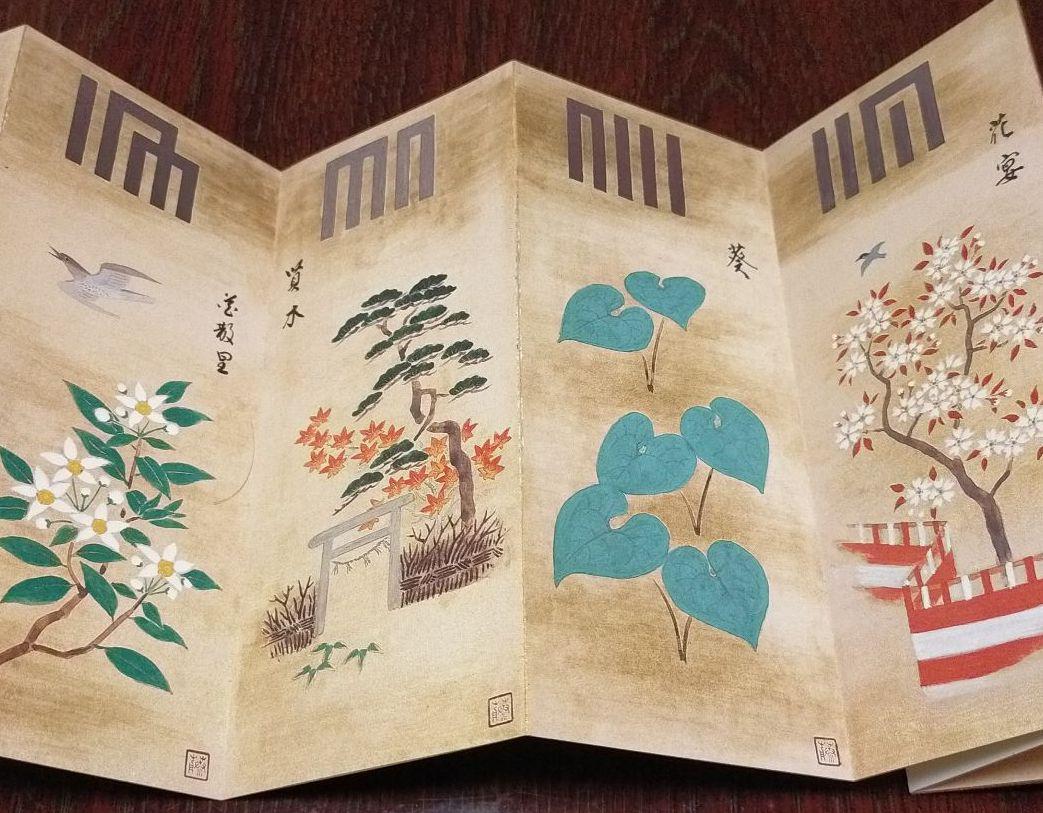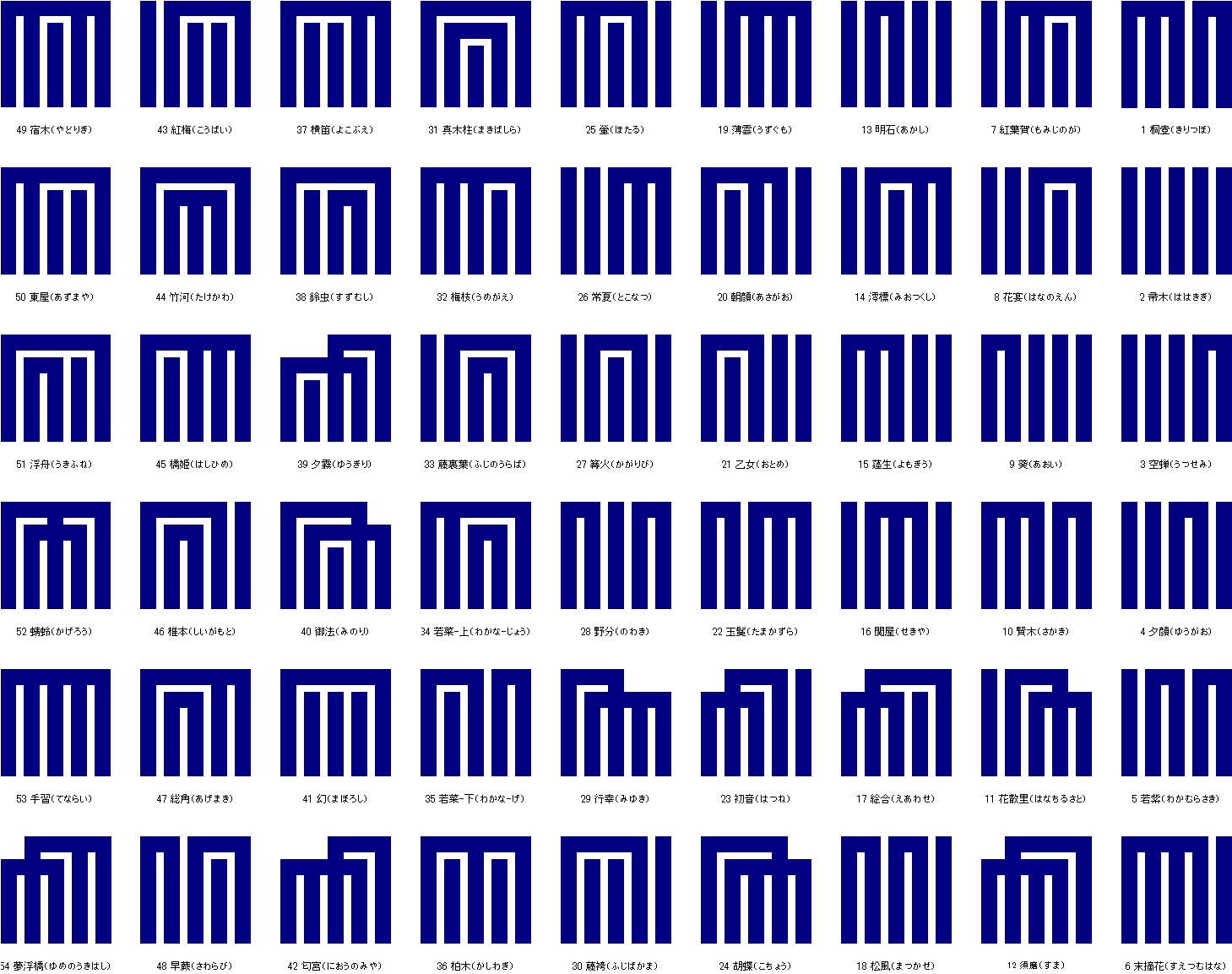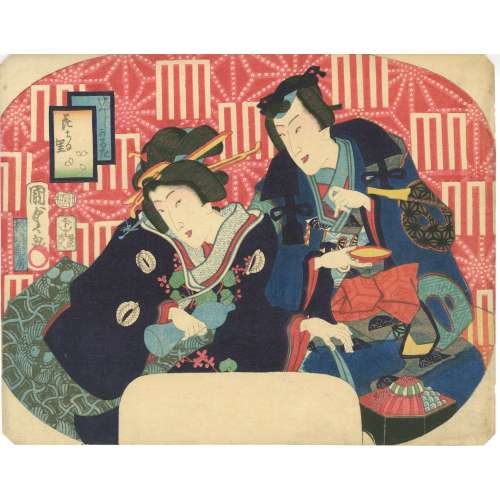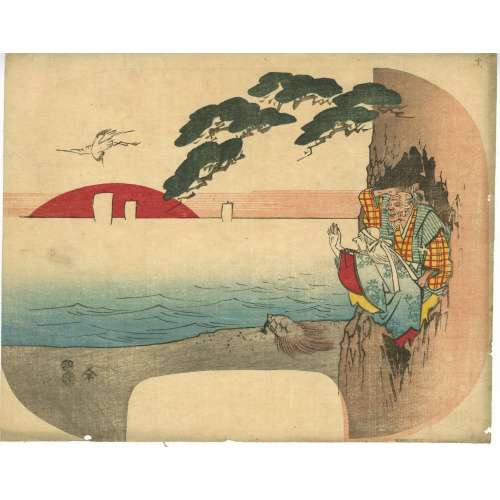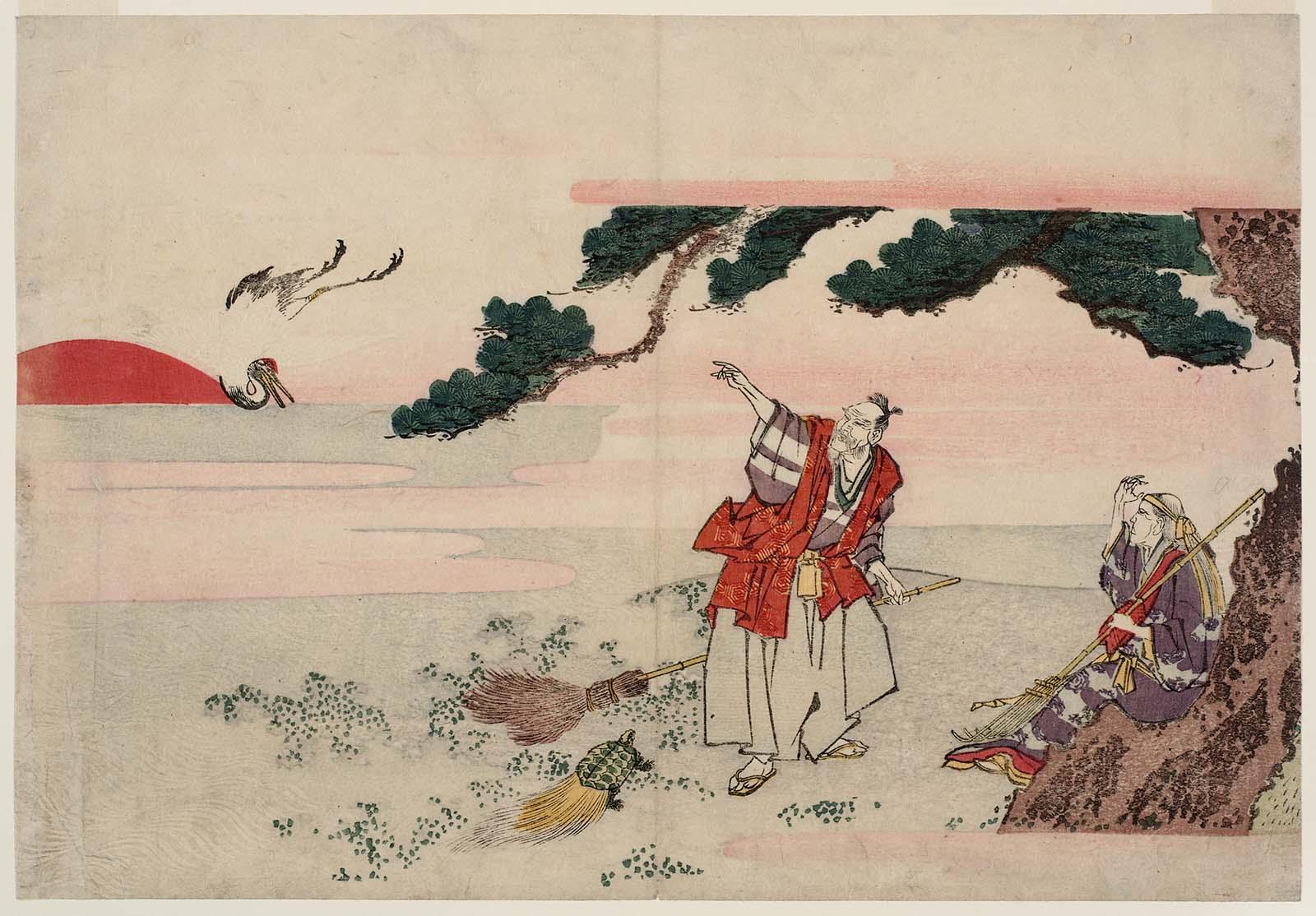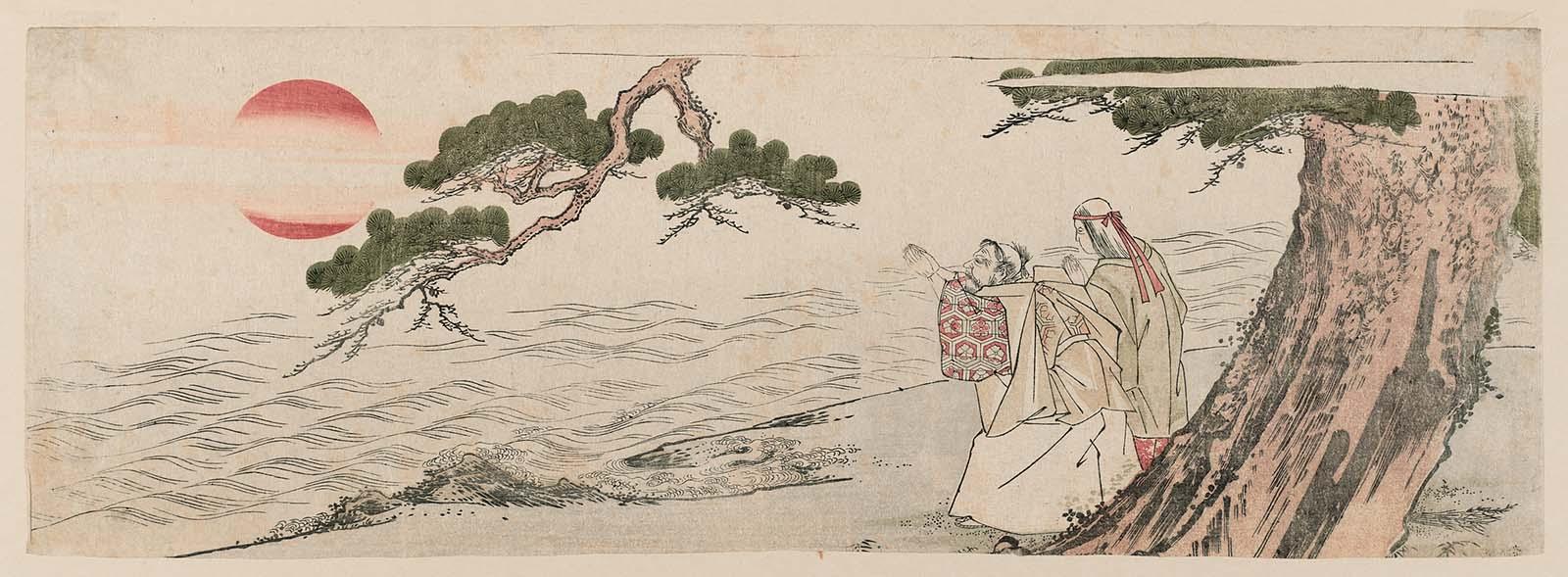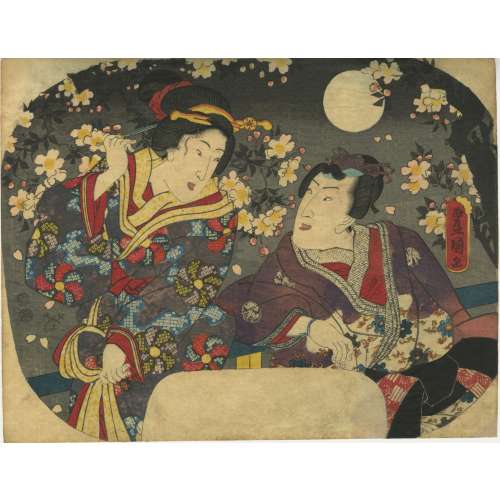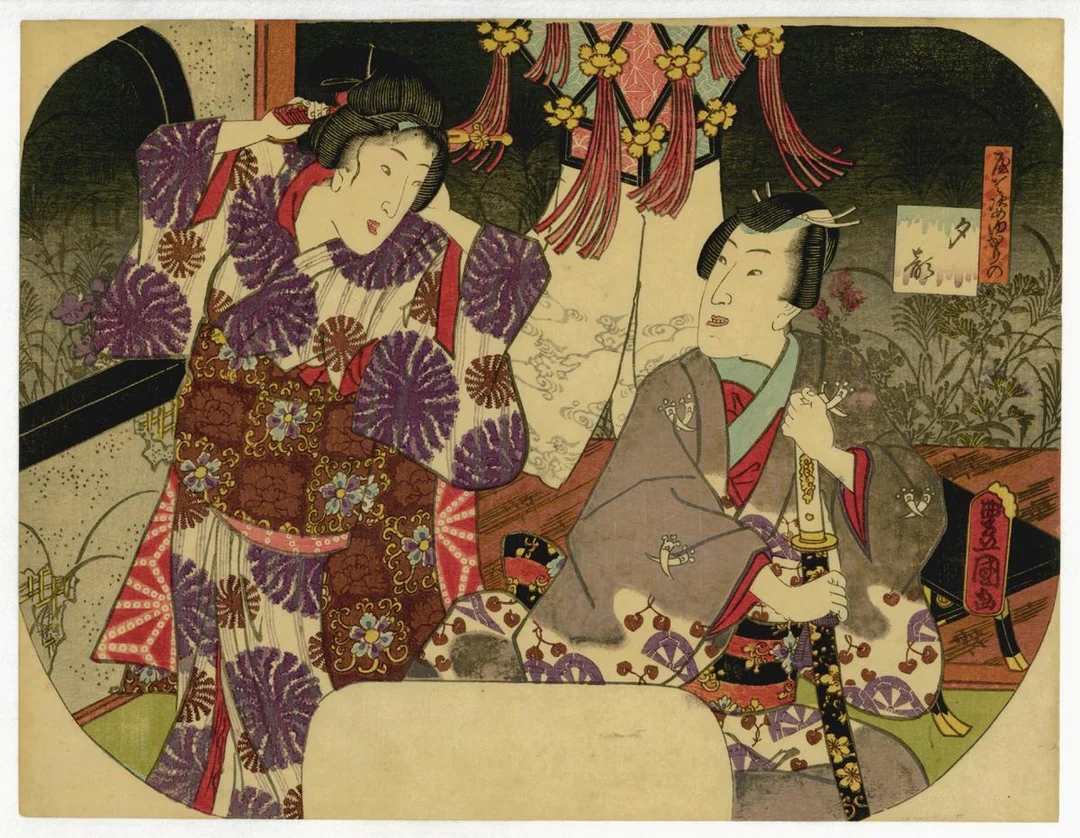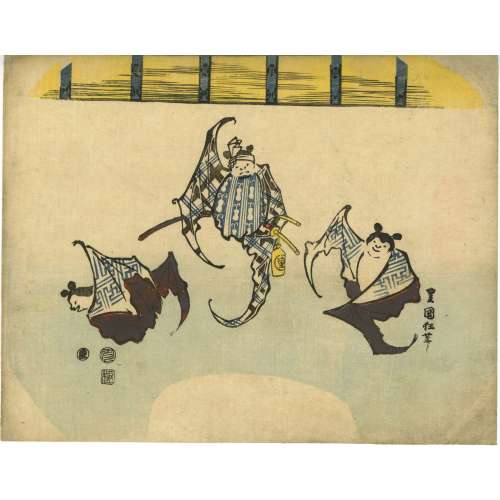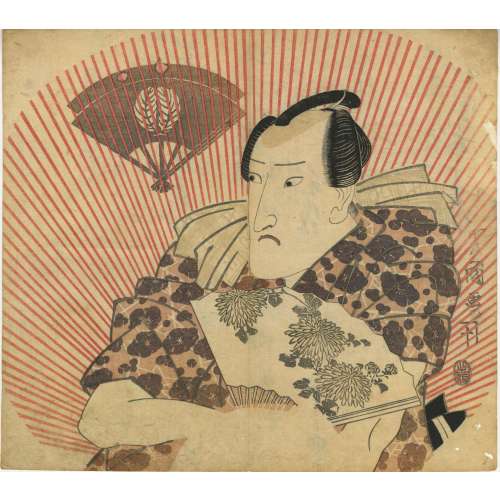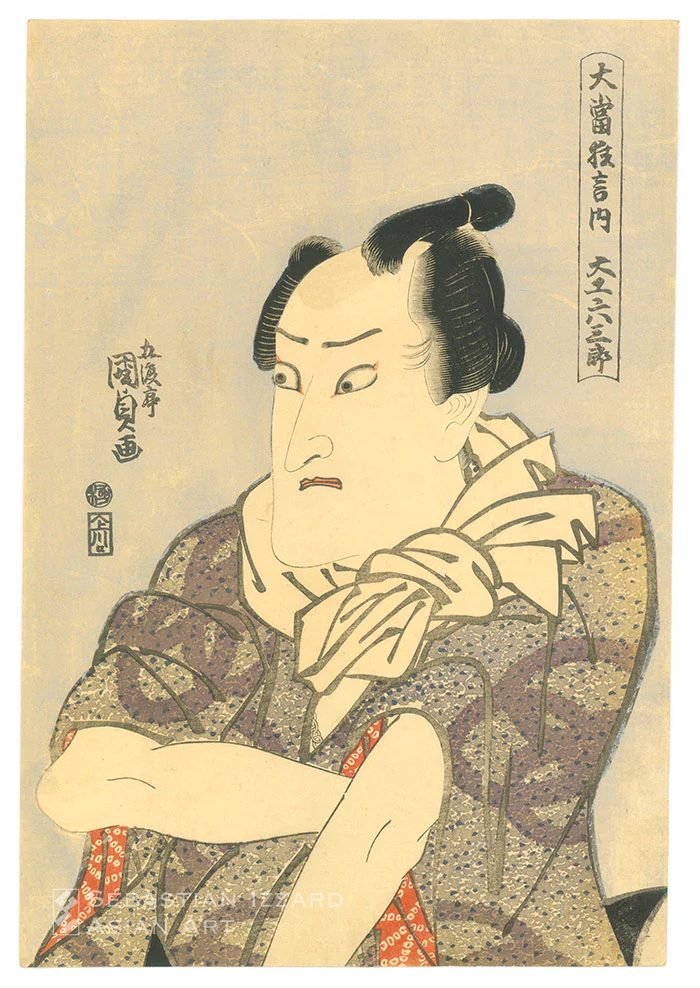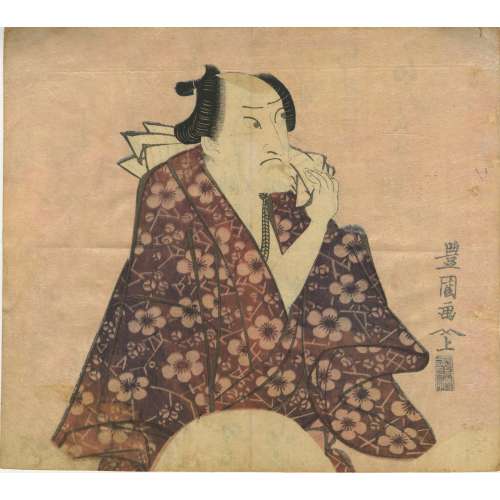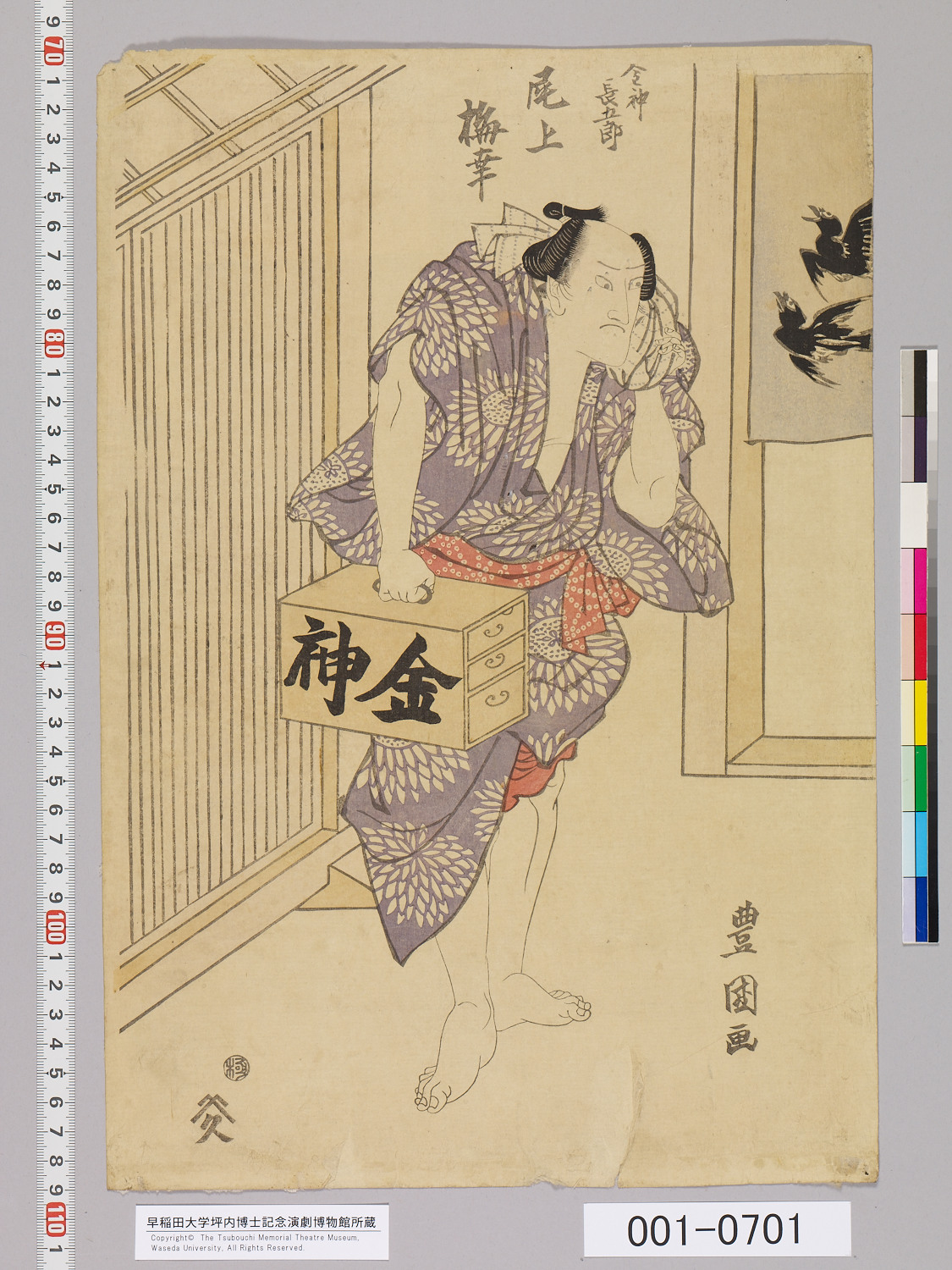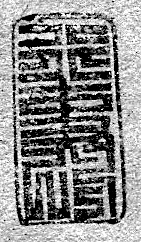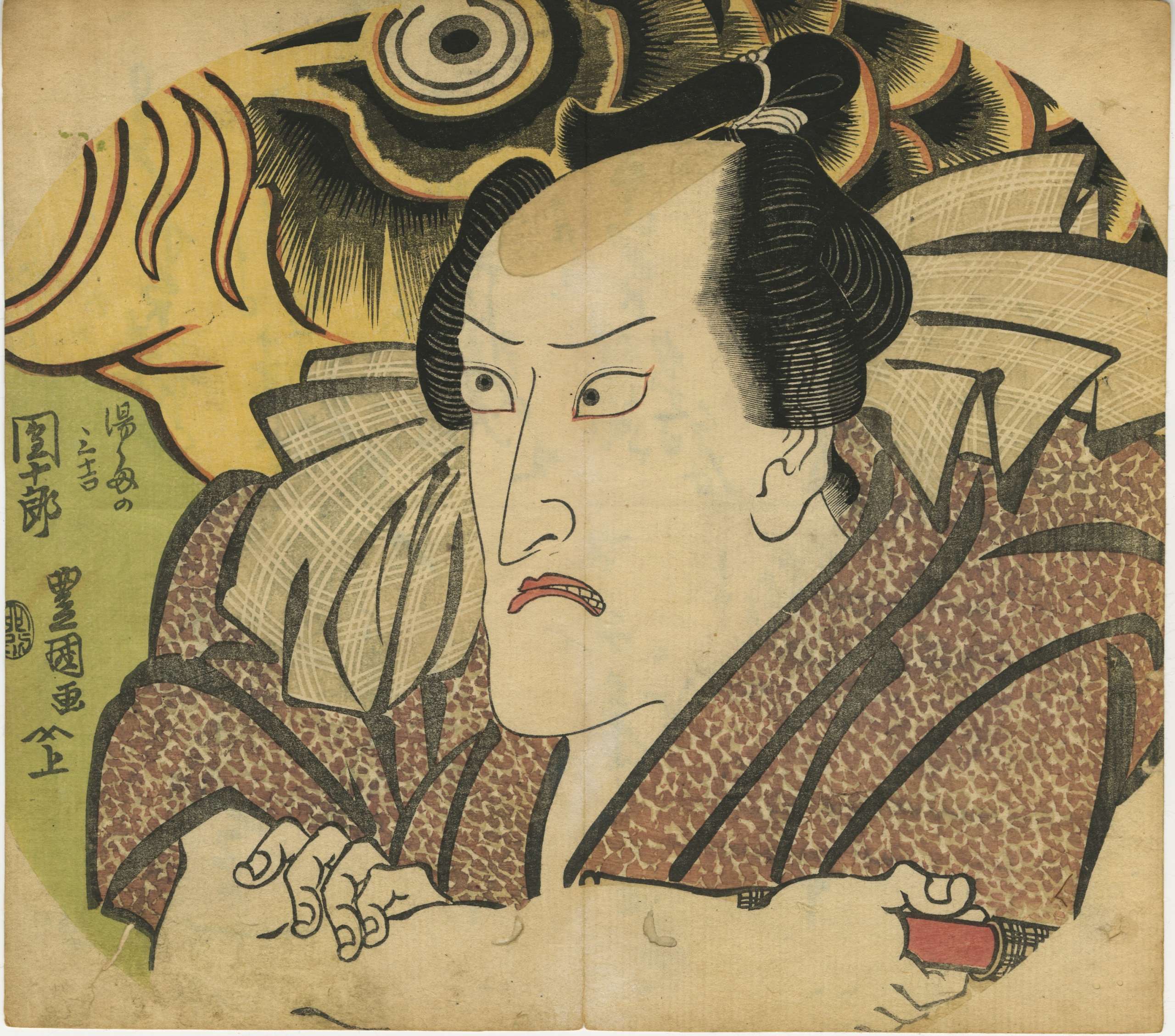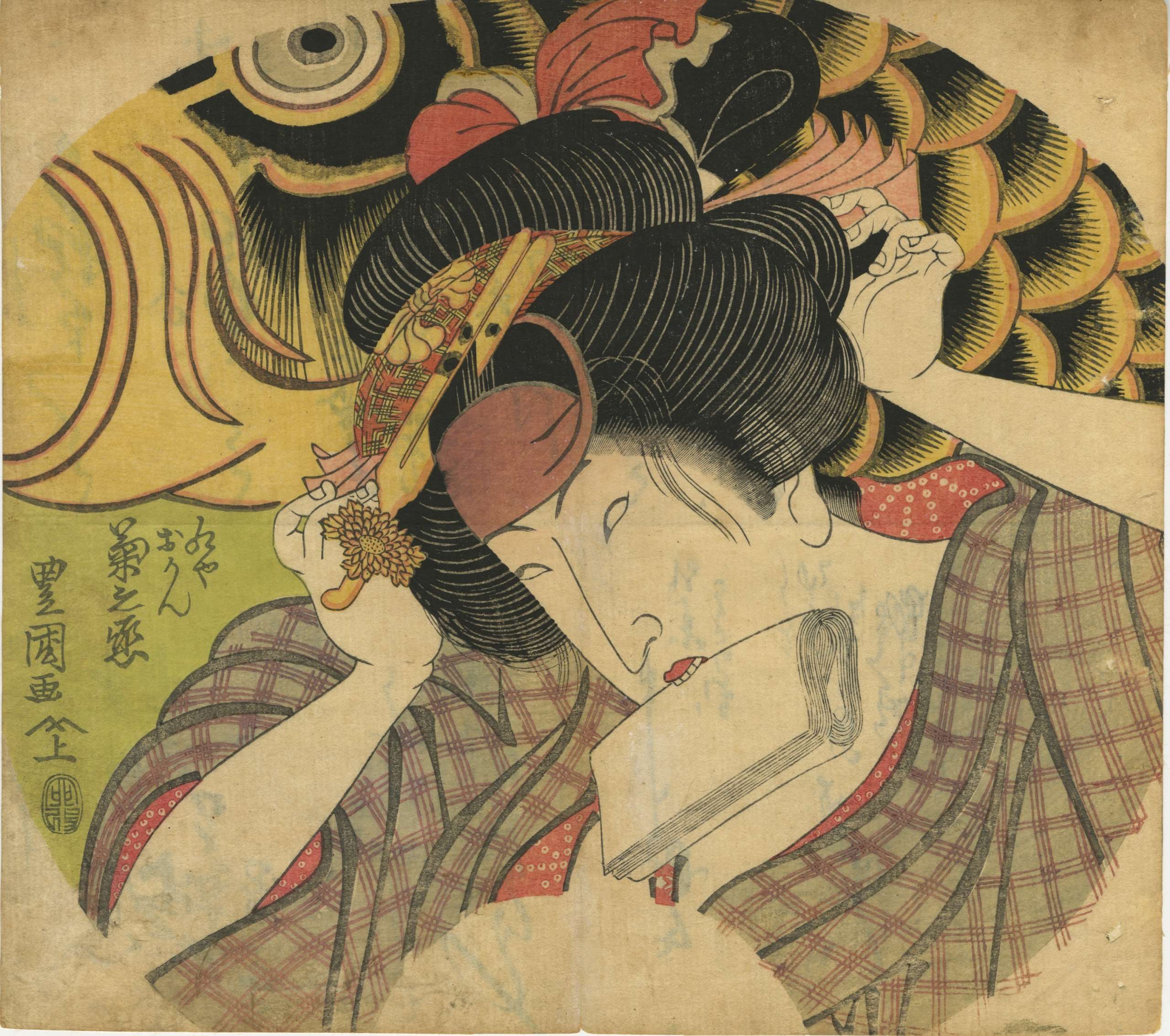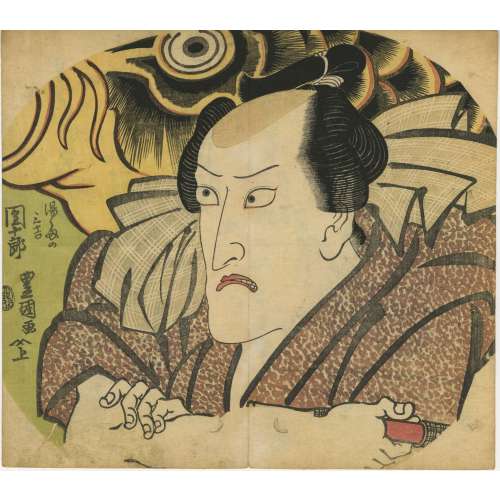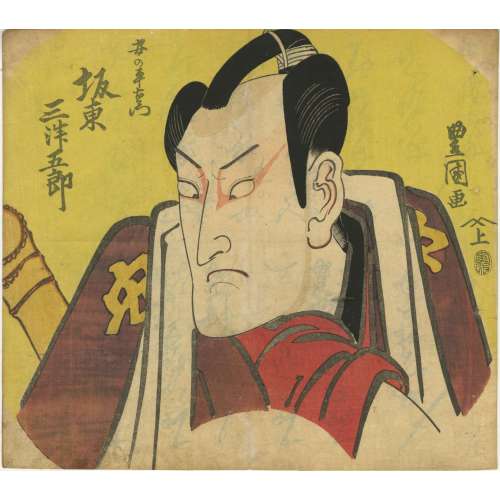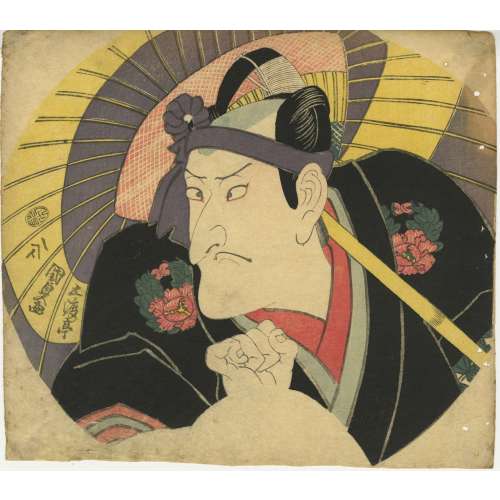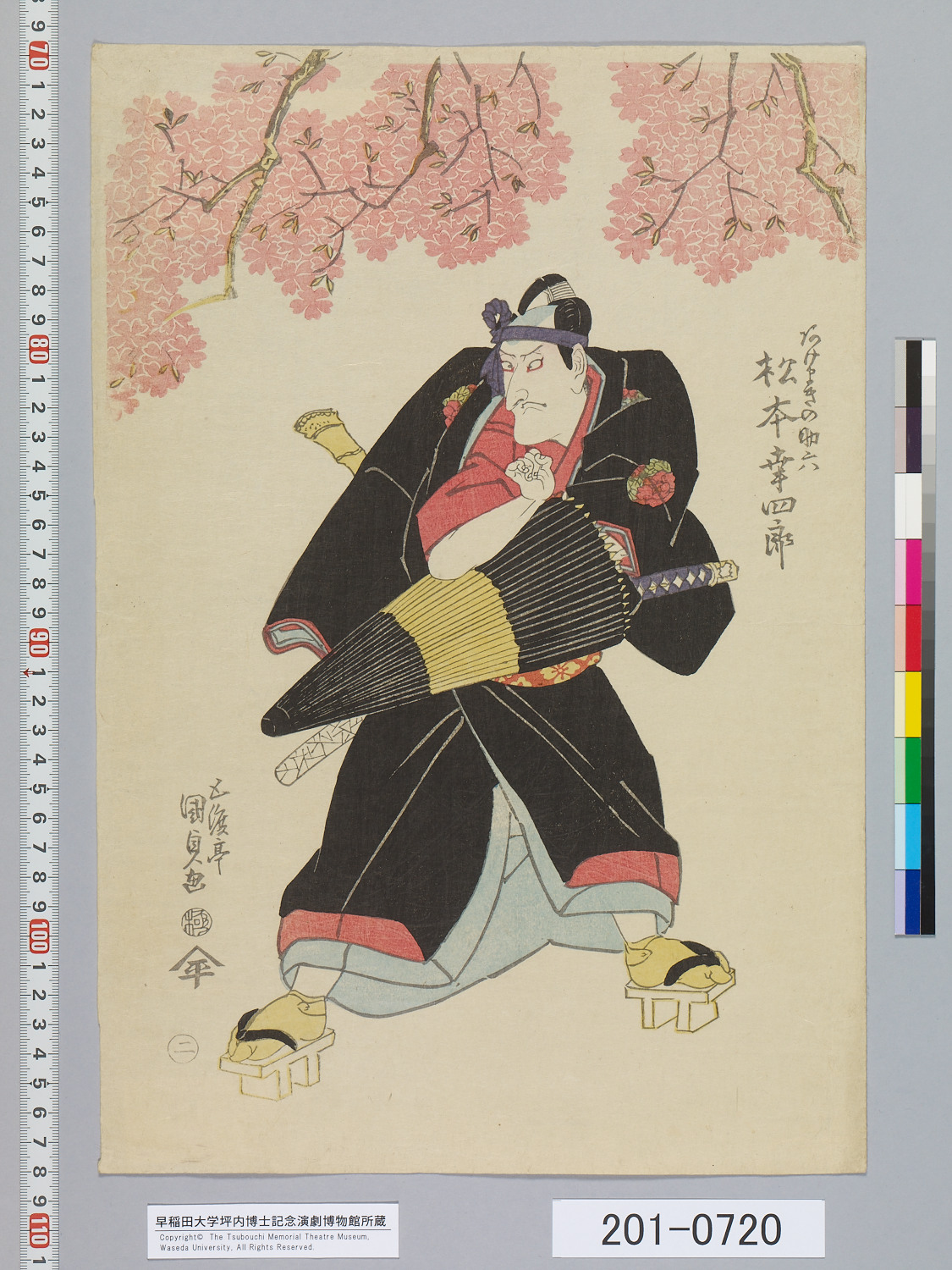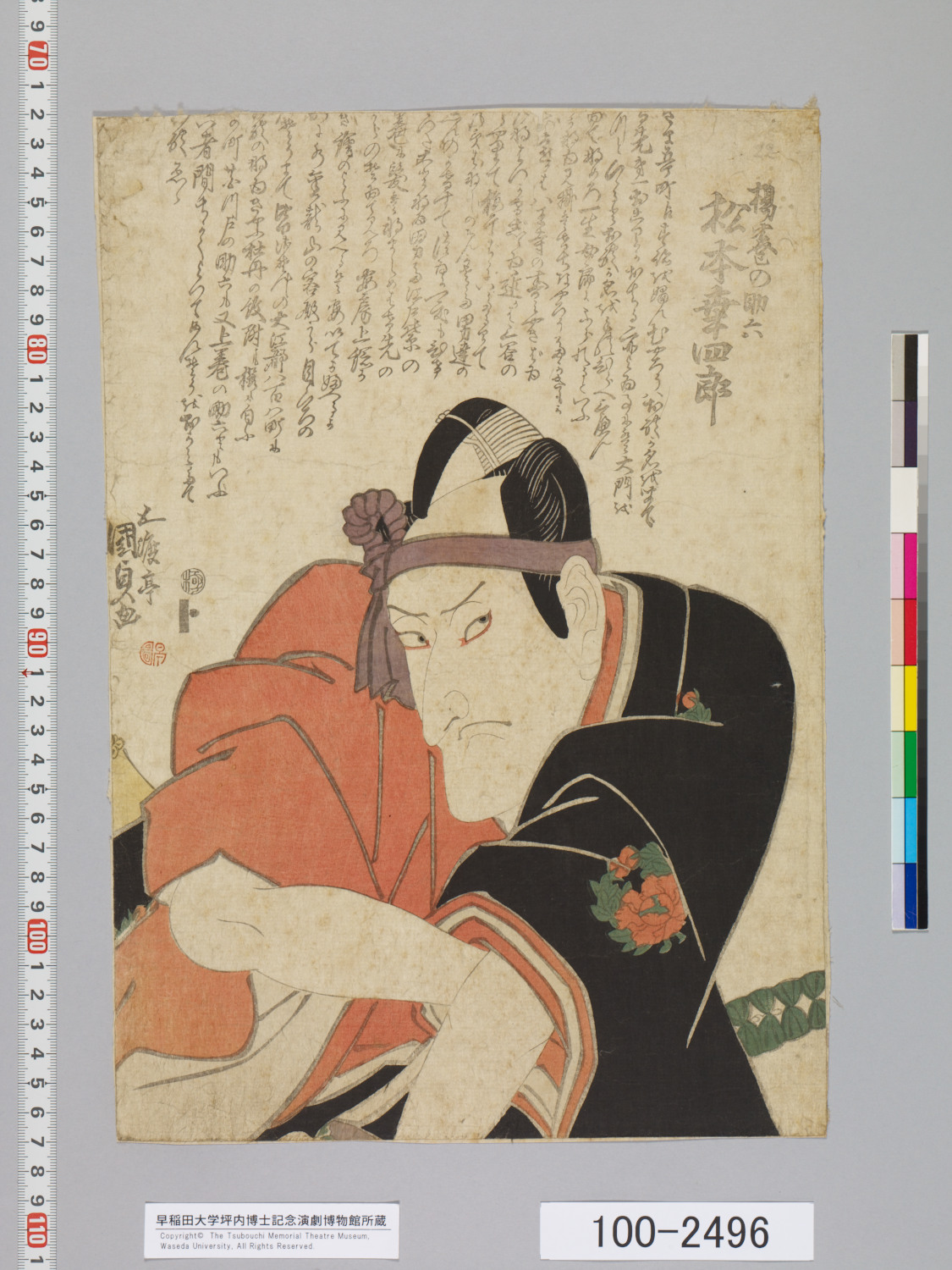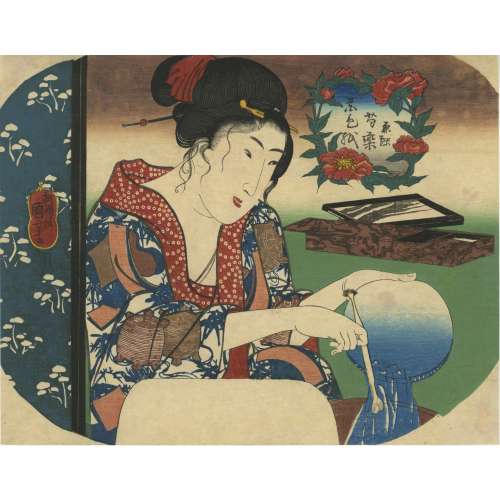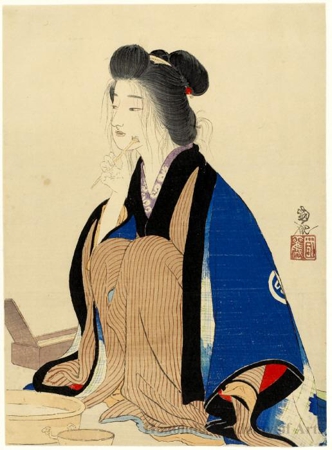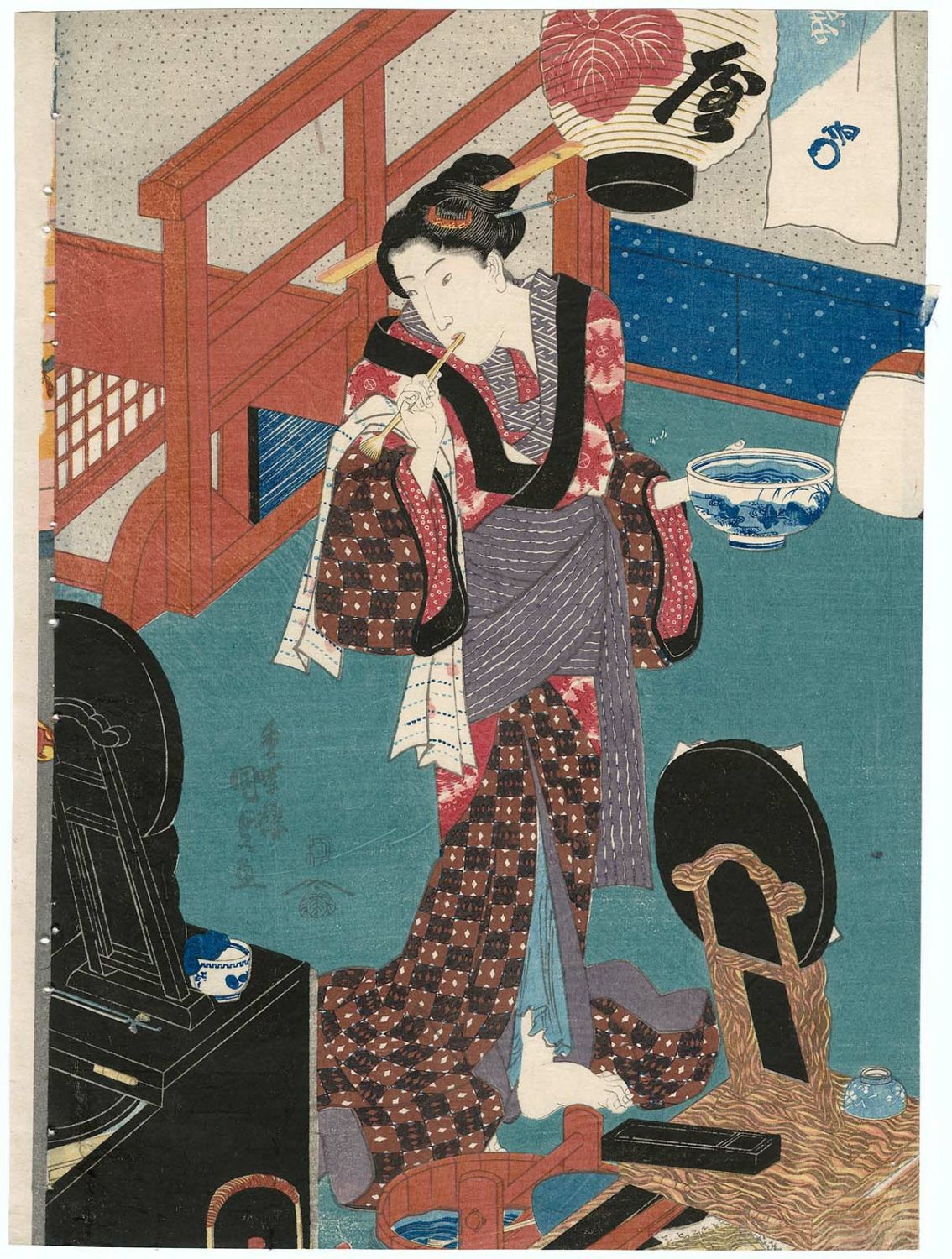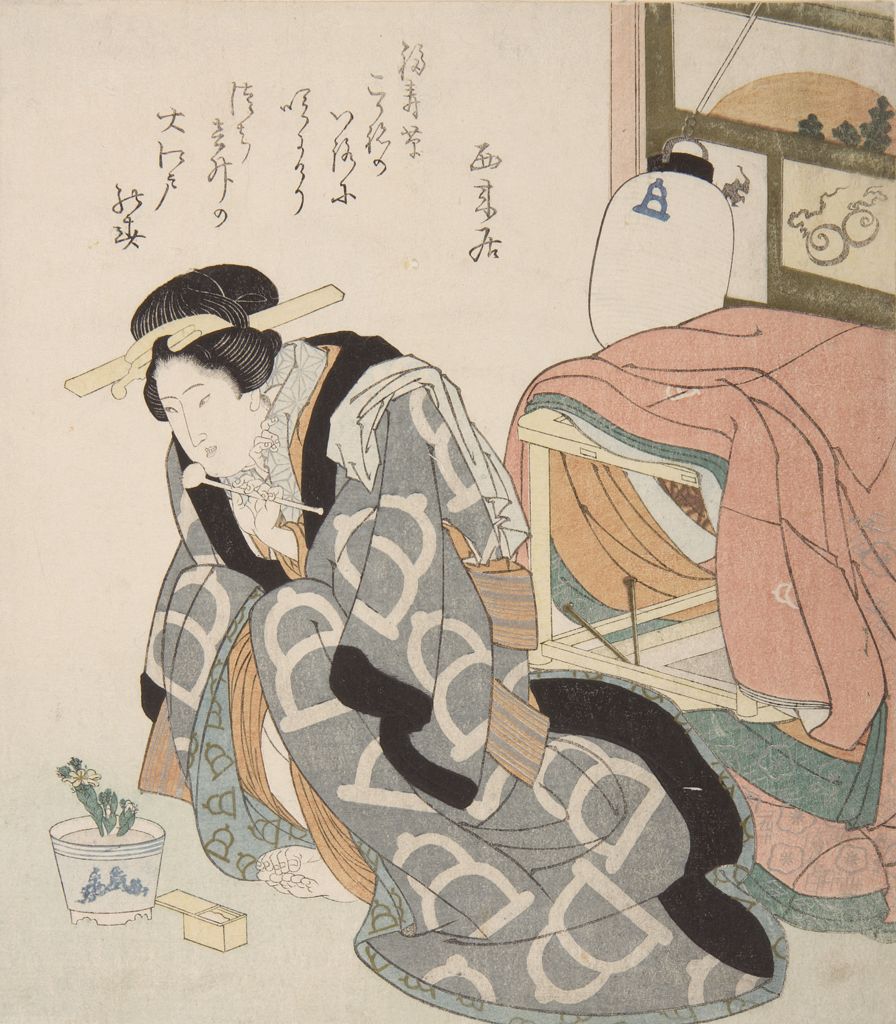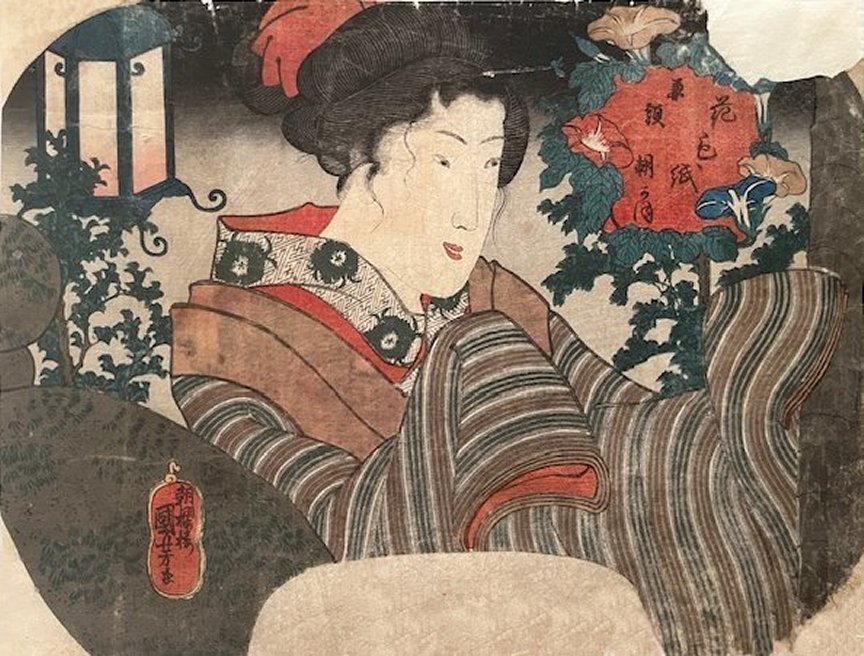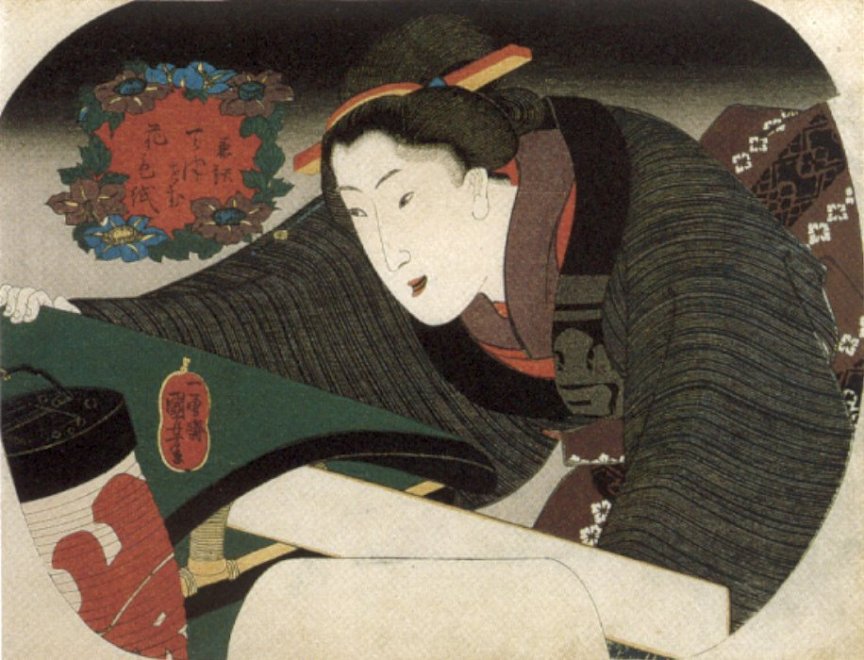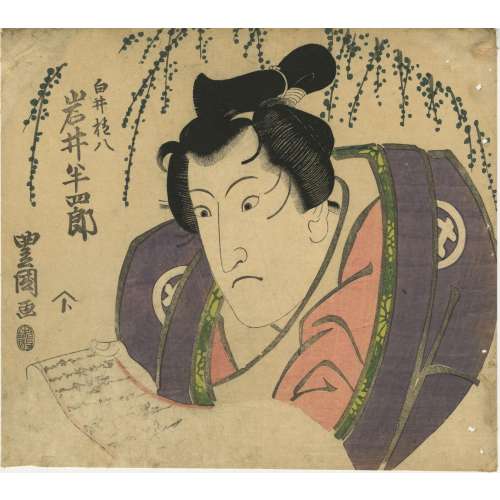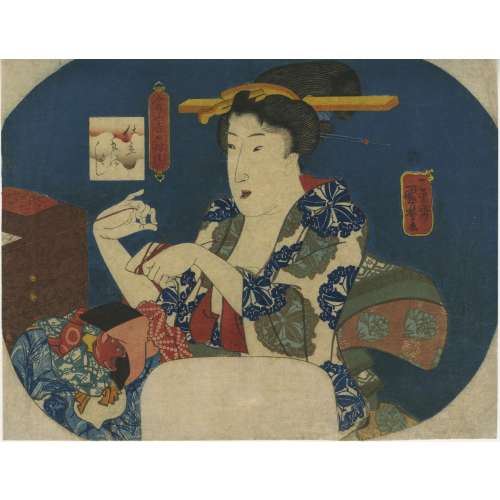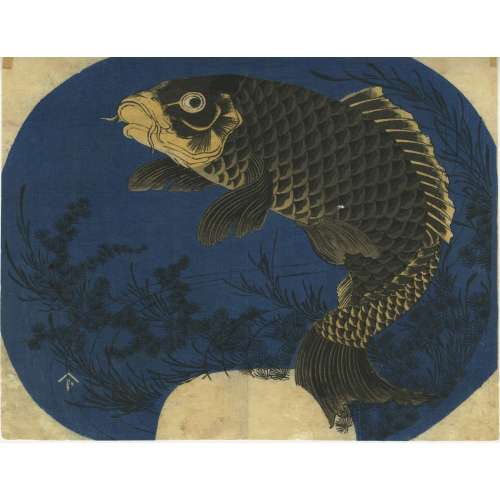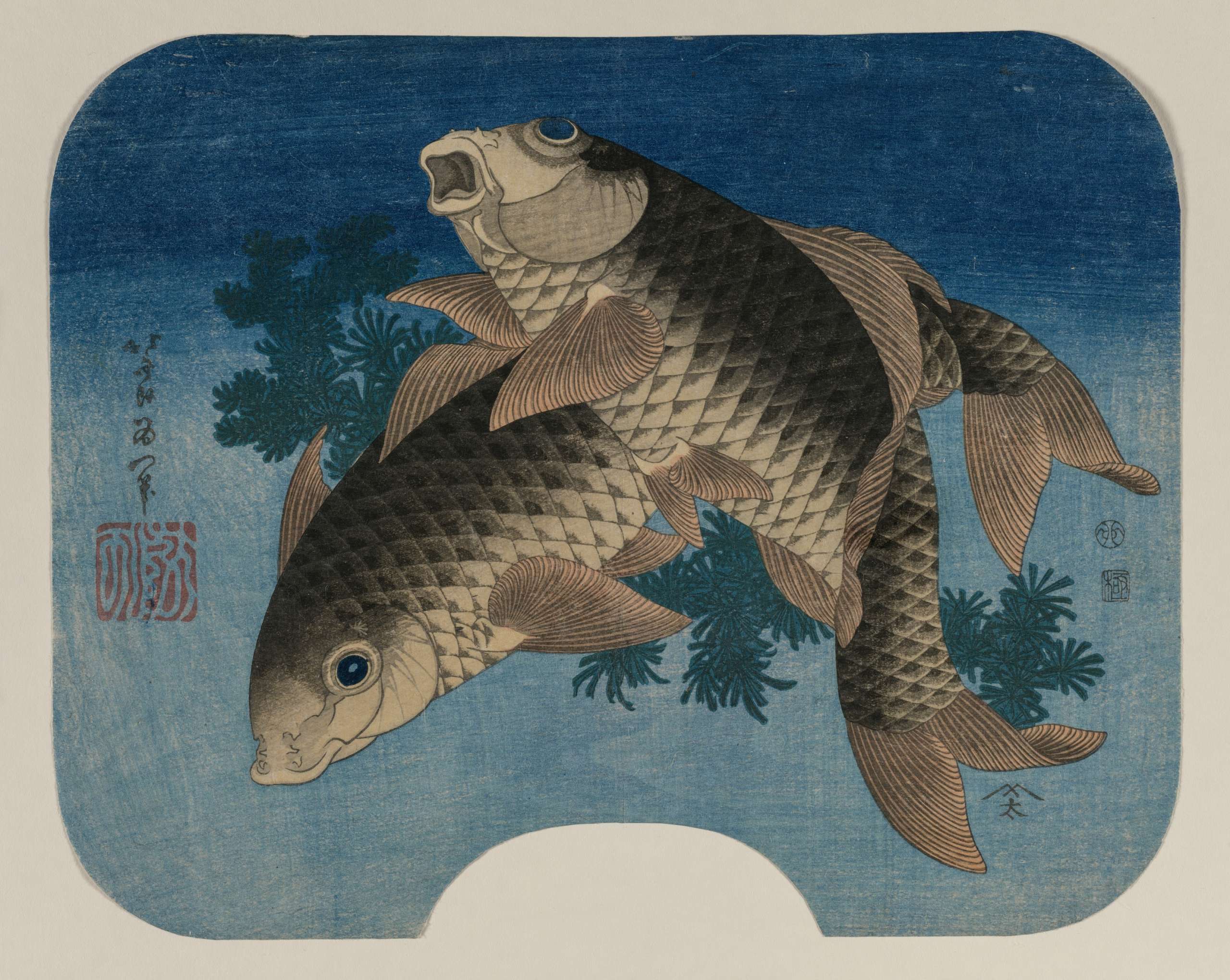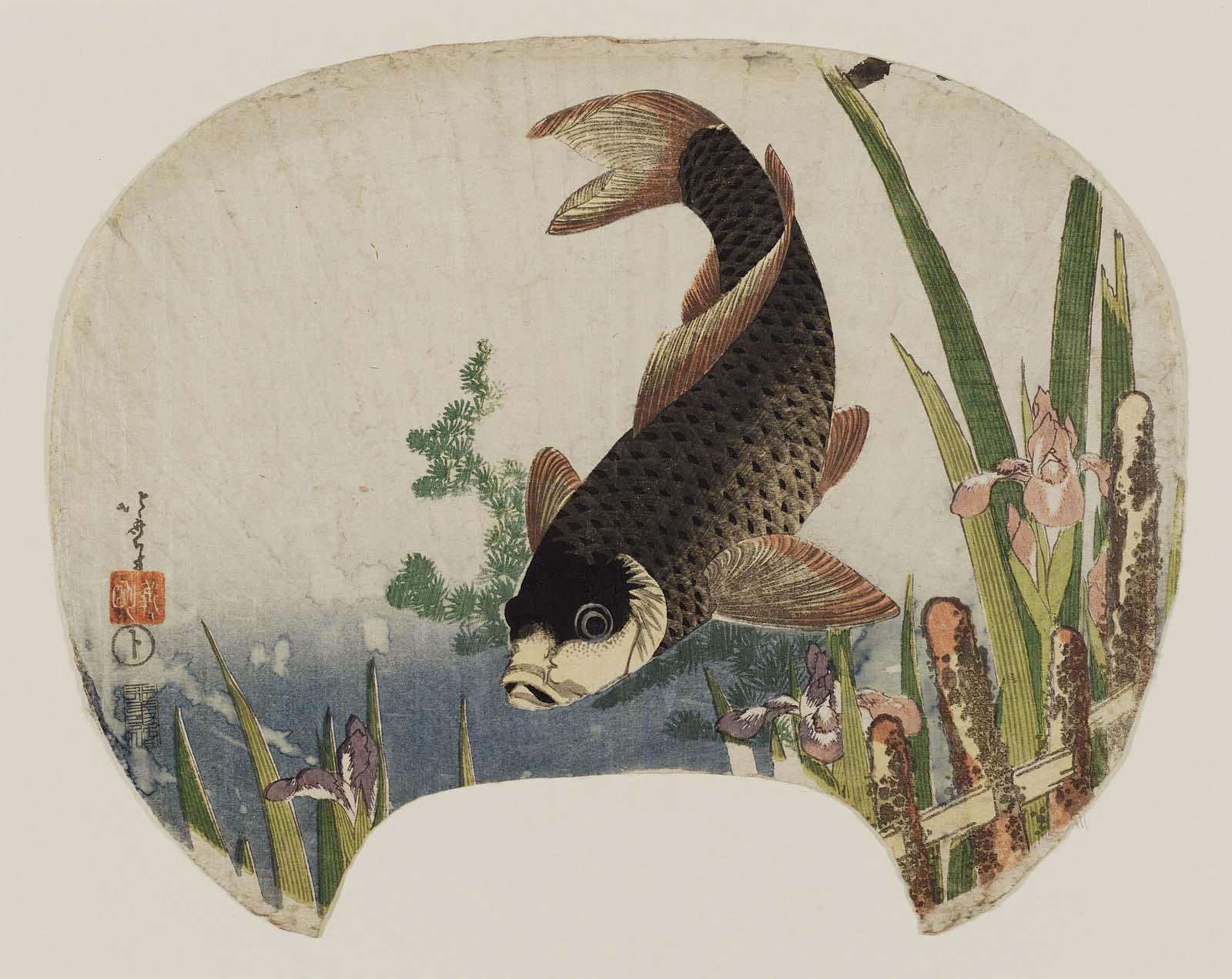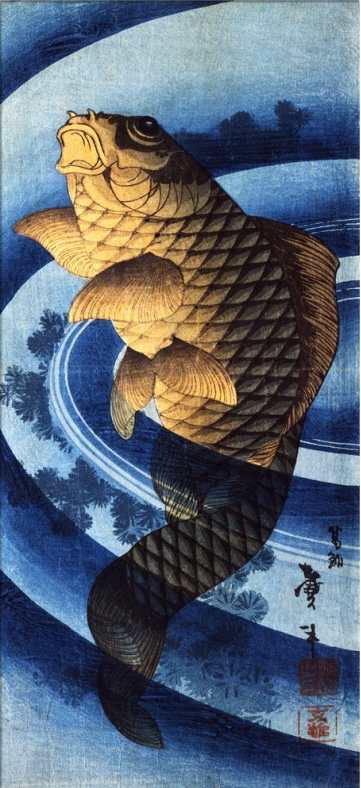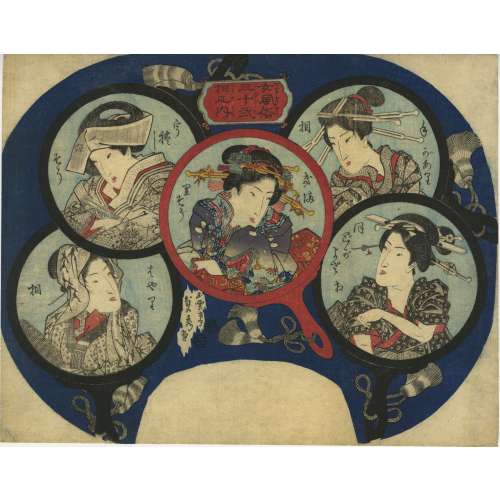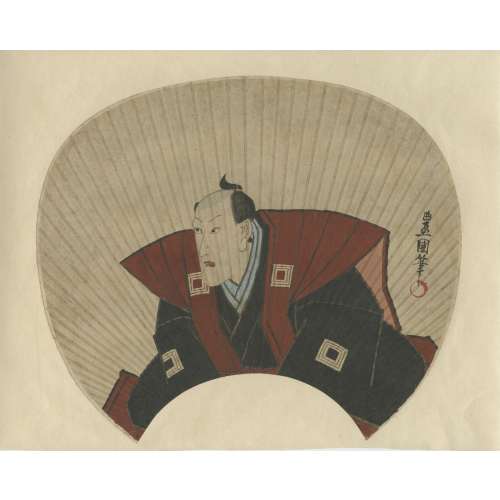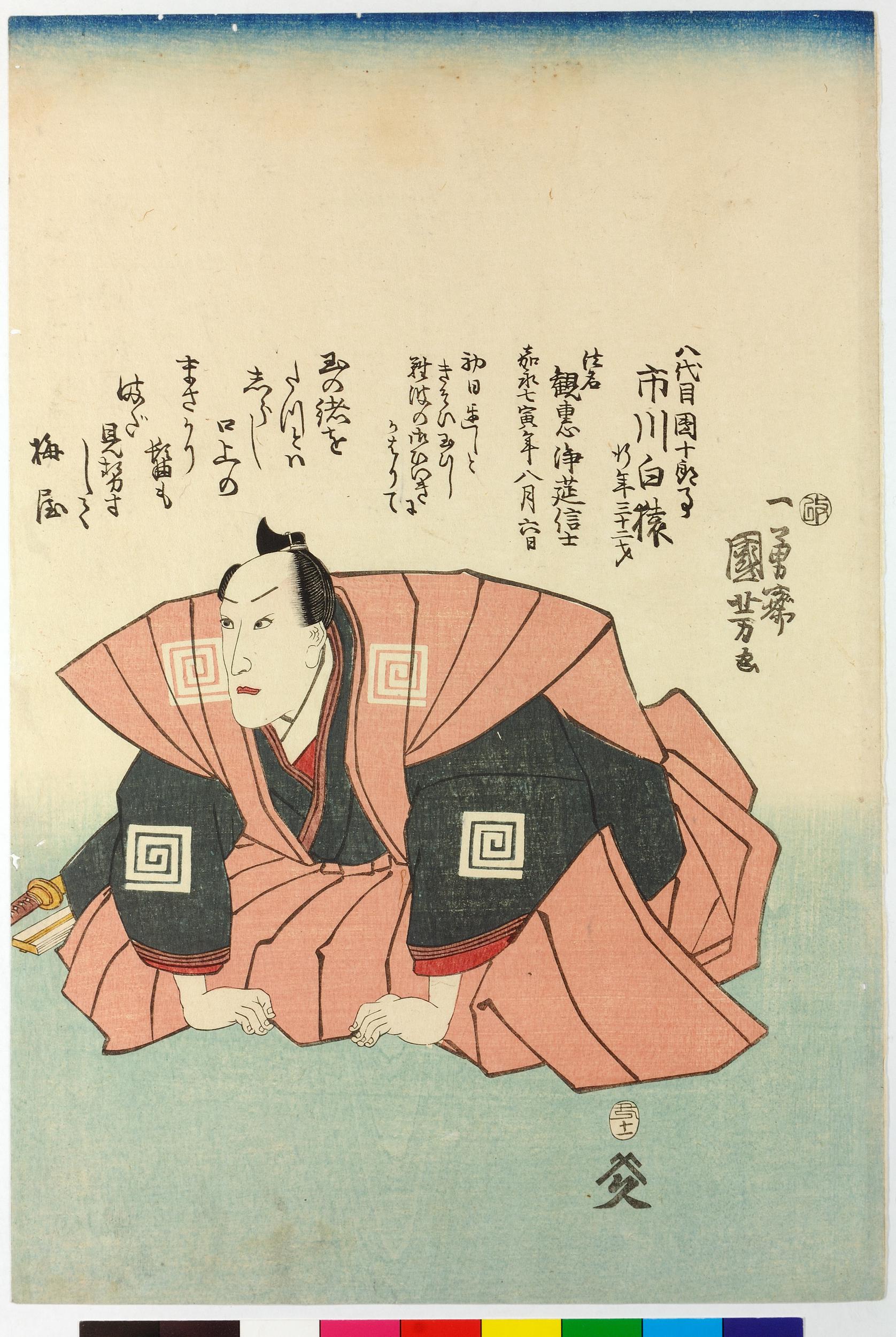Signed: 豊国画 (Toyokuni ga) with red toshidama
Series: Genji Karuta (げんじかるた, Genji cards), in blue cartouche, rightTitle: Hana Chiru Sato (花ちる里, The Village of Falling Flowers – Chapter 11 of The Tale of Genji), in yellow-green cartouche, left
Publisher: Enshūya Matabei (遠州屋又兵衛); Marks reference 22-009 | 057c; seal To, Hori Ni Enmata (ト堀貳遠又) (active 1845–1860s)
Block Carver: Matsushima Fusajirō (松島房次郎), seal Matsushima Hori Fusa (松嶋彫房) (Gordon Friese, 2009, № 137)
Censor Seal: Combined date and kiwame (極) seal; 1867 (Keiō 3, 慶応三年)
Media: Aiban yoko-e uchiwa-e (団扇絵), color woodblock print, 233 × 294 mm
The composition is inspired by Chapter 11, Hana Chiru Sato (花散里, The Village of Falling Flowers) from The Tale of Genji. The title cartouche (花ちる里, Hanachirusato) confirms this reference. The series title, Genji Karuta (げんじかるた, Genji Cards), refers to a traditional matching game based on Genji Monogatari. Genji Karuta sets were used for literary and poetic matching games, where players paired cards featuring text, poetry, or symbolic motifs from The Tale of Genji. These games were part of aristocratic culture, reinforcing familiarity with the novel and classical poetry. Genji Cards feature Genji-mon (源氏紋), stylized crests representing each chapter of The Tale of Genji, which were historically associated with the incense-matching game Genji-kō (源氏香).
The elegantly dressed woman, likely the younger sister of Nyōgo Reikeiden (女御麗景殿), holds a blue double-gourd-shaped sake bottle. Her indigo black (藍黒, Aiguro) haori (羽織) is adorned with white wisteria mon and hollyhock leaves and blossoms (葵, Aoi)—the latter motif being closely associated with Chapter 11.
The man, likely Genji himself, referenced in Chapter 11 as Daishō (大将), wears a red under-kimono with hexagons enclosing blossoms, a blue outer garment with large tsuba motifs, and an obi featuring waves and wheels. He offers the woman a red lacquered sake cup.
A delicate pink tint between the man’s and woman’s eyes and eyebrows hints at mutual tender emotions.
The background features a pink fabric design incorporating Genji-mon (源氏紋, stylized crests representing chapters of The Tale of Genji, historically associated with Genji-kō) and asanoha (麻の葉, hemp-leaf motifs), reinforcing the Heian court aesthetic. At the lower right, a black lacquer hexagonal container holds an assortment of unknown items, possibly sweets or ritual objects.
